Cooking Recipes
Simple Food: Nourishing Body, Mind, and Planet
In today’s fast-paced world, the concept of simplicity often takes a backseat to convenience. However, when it comes to nutrition, simplicity can be a powerful ally in promoting health and vitality. So, what exactly is a simple food?
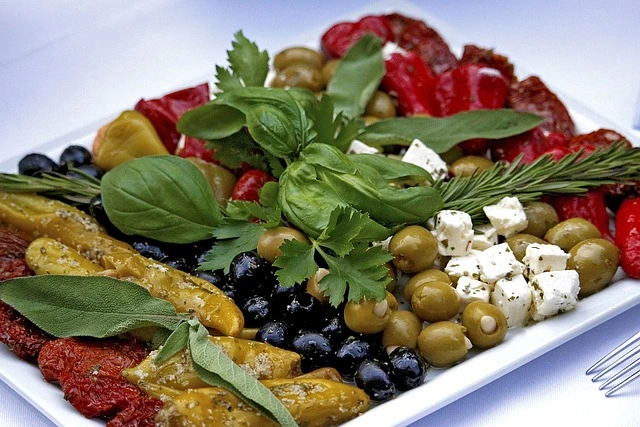
The Characteristics of Simple Food (2024)
Freshness
Simple foods are typically fresh and minimally processed. They are as close to their natural state as possible, retaining their original nutrients and flavors. By choosing fresh produce and whole foods, you can ensure that you’re nourishing your body with the best that nature has to offer.
Minimal Processing
Unlike heavily processed foods that are laden with additives and preservatives, simple foods undergo minimal processing. This means they contain fewer artificial ingredients and are free from unnecessary chemicals. By opting for foods with minimal processing, you can avoid the negative health effects associated with consuming overly processed products.
Nutritional Density
Simple foods are packed with essential nutrients that are vital for overall health and well-being. They are rich in vitamins, minerals, fiber, and antioxidants, providing your body with the fuel it needs to function optimally. By prioritizing simple foods in your diet, you can ensure that you’re getting the nutrients your body needs to thrive.
Examples of Simple Foods
Fruits and Vegetables
Fresh fruits and vegetables are the epitome of simplicity when it comes to food. They are bursting with vitamins, minerals, and antioxidants, making them an essential component of any healthy diet. Whether enjoyed raw or cooked, fruits and vegetables are versatile ingredients that can be incorporated into a wide range of dishes.
Whole Grains
Whole grains such as brown rice, quinoa, and oats are another example of simple foods. Unlike refined grains, which have been stripped of their nutrients during processing, whole grains retain their fiber, vitamins, and minerals. Incorporating whole grains into your meals can help stabilize blood sugar levels and promote digestive health.
Lean Proteins
Lean proteins such as chicken, fish, tofu, and legumes are essential for muscle repair and growth. They are low in saturated fat and cholesterol, making them heart-healthy choices for protein sources. By including lean proteins in your diet, you can feel satisfied and energized without weighing yourself down with excessive calories or unhealthy fats.
Legumes
Beans, lentils, and peas are nutrient-dense legumes that offer a plethora of health benefits. They are rich in protein, fiber, and complex carbohydrates, making them an excellent choice for vegetarians and vegans. Adding legumes to soups, salads, and stews can help boost satiety and promote long-lasting energy levels.
Benefits of Consuming Simple Foods
Improved Digestion
Simple foods are easier for the body to digest compared to their processed counterparts. They contain natural enzymes and fiber, which help promote healthy digestion and regularity. By prioritizing simple foods in your diet, you can reduce the risk of digestive issues such as bloating, gas, and constipation.
Weight Management
Simple foods are generally lower in calories and higher in nutrients compared to processed foods. By focusing on whole, unprocessed foods, you can naturally regulate your calorie intake and maintain a healthy weight. Additionally, the fiber and protein found in simple foods help promote feelings of fullness and satisfaction, preventing overeating and cravings.
Enhanced Energy Levels
Simple foods provide a steady source of energy that sustains you throughout the day. Unlike sugary snacks and processed foods, which can cause energy crashes and fluctuations in blood sugar levels, simple foods provide a stable source of fuel for your body and brain. By nourishing yourself with simple, nutrient-dense foods, you can experience sustained energy levels and mental clarity.
Simple Food Recipes
Simple Green Salad
- Ingredients: Mixed greens, cherry tomatoes, cucumber, bell peppers, olive oil, balsamic vinegar, salt, and pepper.
- Instructions: Combine the ingredients in a bowl, toss with olive oil and balsamic vinegar, season with salt and pepper, and serve.
Quinoa and Vegetable Stir-Fry
- Ingredients: Quinoa, mixed vegetables (such as bell peppers, broccoli, and carrots), tofu or chicken, soy sauce, garlic, ginger, and sesame oil.
- Instructions: Cook quinoa according to package instructions. In a separate pan, stir-fry vegetables and protein with garlic, ginger, and soy sauce. Serve over cooked quinoa.
Baked Salmon with Steamed Broccoli
- Ingredients: Salmon fillets, lemon, garlic, olive oil, broccoli, salt, and pepper.
- Instructions: Season salmon with garlic, lemon, olive oil, salt, and pepper. Bake in the oven until cooked through. Steam broccoli until tender. Serve salmon with steamed broccoli on the side.
Incorporating Simple Foods into Your Diet
Meal Planning Tips
- Plan your meals ahead of time to ensure you have a variety of simple foods on hand.
- Batch cook simple recipes to save time during the week.
- Experiment with different flavors and cuisines to keep meals interesting and enjoyable.
Grocery Shopping Strategies
- Shop the perimeter of the grocery store, where fresh produce, meats, and dairy products are located.
- Read labels carefully and avoid products with long lists of artificial ingredients and preservatives.
- Choose organic and locally sourced foods whenever possible to support sustainable agriculture practices.
Conclusion
In conclusion, simple foods are an essential component of a healthy diet. By prioritizing fresh, minimally processed ingredients, you can nourish your body and support overall health and wellness. Whether you’re enjoying a crisp green salad, a hearty bowl of quinoa stir-fry, or succulent baked salmon, incorporating simple foods into your meals can have a profound impact on your health and vitality
Cooking Recipes
Nutella Nutrition Facts: Decoding the Delicious Spread
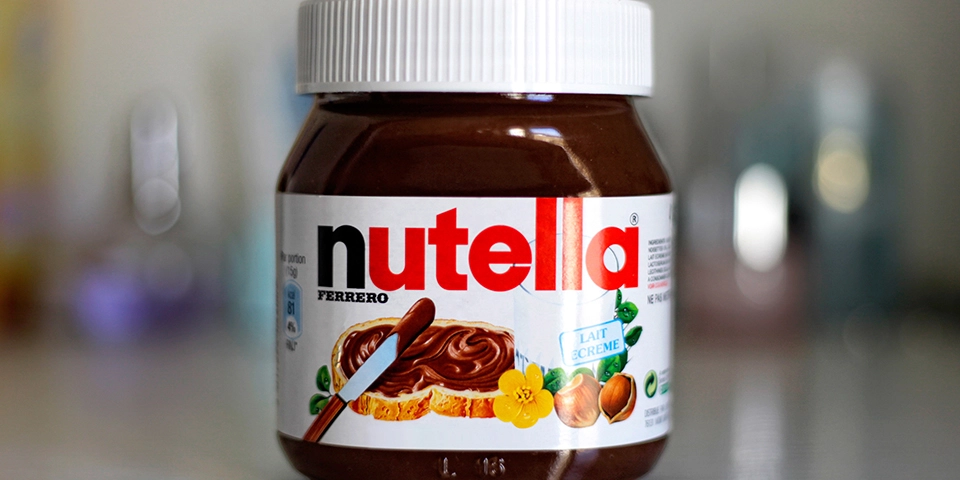
Nutella, the beloved hazelnut spread, has garnered a cult following since its inception. Loved by both kids and adults alike, this creamy delight has become a pantry staple in households worldwide. But beyond its irresistible taste, what do we know about Nutella’s nutritional profile? Let’s delve into the details and uncover the nutrition facts behind this popular spread.

Introduction to Nutella Nutrition Facts
Brief History
Nutella traces its origins back to post-World War II Italy, where cocoa was in short supply. Pietro Ferrero, a pastry maker from Piedmont, ingeniously created a spread using hazelnuts to stretch the cocoa supply. This concoction eventually evolved into the Nutella we know today.
Popularity and Consumption
Since its introduction, Nutella has skyrocketed in popularity, earning a permanent spot on breakfast tables and dessert menus worldwide. Its creamy texture, coupled with the rich flavor of roasted hazelnuts and cocoa, makes it a versatile ingredient in various culinary creations.
Nutritional Composition of Nutella
Nutella’s nutritional profile is a balance of macronutrients and micronutrients, each playing a role in its overall health impact.
Macronutrients Breakdown
A typical serving of Nutella (two tablespoons) contains approximately 200 calories, with the majority coming from fats and carbohydrates.
Micronutrients Content
Nutella also provides essential micronutrients such as iron and calcium, albeit in smaller quantities compared to other sources.
Calories in Nutella
Serving Size and Calorie Count
With its rich taste, it’s easy to indulge in Nutella. However, moderation is key, as two tablespoons pack a significant calorie punch.
Comparison with Other Spreads (2024)
When compared to alternatives like peanut butter or fruit preserves, Nutella tends to have a higher calorie count due to its sugar and fat content.
Fat Content in Nutella
Types of Fats Present
Nutella contains both saturated and unsaturated fats, with hazelnuts contributing to its healthy fat profile.
Health Implications
While fats are an essential part of a balanced diet, excessive consumption of saturated fats, as found in Nutella, may increase the risk of heart disease if not consumed in moderation.
Sugar Content in Nutella
Impact on Health
One of the main criticisms of Nutella is its high sugar content. Excessive sugar intake has been linked to various health issues, including obesity and type 2 diabetes.
Recommended Intake
Health experts recommend limiting added sugar intake, making Nutella an occasional treat rather than a dietary staple.
Protein Content in Nutella
Contribution to Daily Protein Needs
While Nutella contains some protein from hazelnuts, it’s not a significant source compared to other protein-rich foods.
Comparison with Other Sources
For those looking to boost their protein intake, alternatives like Greek yogurt or nut butter may be more suitable options.
Vitamins and Minerals in Nutella
Overview of Essential Nutrients
Nutella contains small amounts of vitamins and minerals, including vitamin E and calcium, contributing to overall nutrient intake.
Percentage of Daily Value Provided
However, the amounts are relatively low, and Nutella should not be relied upon as a primary source of these nutrients.
Health Benefits of Nutella
Antioxidant Properties of Cocoa
Cocoa, one of Nutella’s main ingredients, is rich in antioxidants, which may offer various health benefits, including heart health and improved mood.
Energy Boost from Sugar and Fat
The combination of sugar and fat in Nutella provides a quick source of energy, making it a popular choice for a morning pick-me-up.
Health Concerns and Risks
Obesity and Weight Gain
Due to its high calorie and sugar content, excessive consumption of Nutella may contribute to weight gain and obesity if not consumed in moderation.
Dental Health Implications
The sticky texture and sugar content of Nutella can increase the risk of tooth decay and cavities, especially if proper oral hygiene practices are not followed.
Is Nutella Vegan?
Ingredients Overview
While Nutella does not contain any animal products, it does contain processed sugar, which may or may not be considered vegan depending on personal beliefs.
Suitability for Vegans
However, individuals following a strict vegan lifestyle should be aware of the sugar sourcing and make an informed decision based on their dietary preferences.
Gluten-Free Status of Nutella
Analysis of Ingredients
Nutella does not contain any gluten-containing ingredients. However, cross-contamination may occur during manufacturing, so individuals with celiac disease should exercise caution.
Celiac Disease Considerations
Those with gluten sensitivity or celiac disease should verify Nutella’s gluten-free status by checking for appropriate labeling or contacting the manufacturer.
Allergens in Nutella
Common Allergens Present
Nutella contains hazelnuts and milk, making it unsuitable for individuals with nut or dairy allergies.
Cross-Contamination Risks
Cross-contamination with other allergens may also occur during the manufacturing process, so individuals with severe allergies should exercise caution.
How to Include Nutella in a Healthy Diet
Portion Control Tips
Enjoy Nutella in moderation, sticking.
Conclusion
In conclusion, Nutella is a beloved spread enjoyed by many around the world. Its rich and creamy texture, combined with the delightful taste of hazelnuts and cocoa, makes it a versatile addition to various dishes and snacks. However, it’s essential to consume Nutella in moderation due to its high calorie, sugar, and fat content. While it can be part of a balanced diet, overindulgence may lead to health concerns such as weight gain and dental issues. By being mindful of portion sizes and incorporating Nutella as an occasional treat rather than a dietary staple, individuals can continue to savor its deliciousness while maintaining overall health and well-being.
Cooking Recipes
Gourmet Popcorn: A Delicious Twist on a Classic Snack
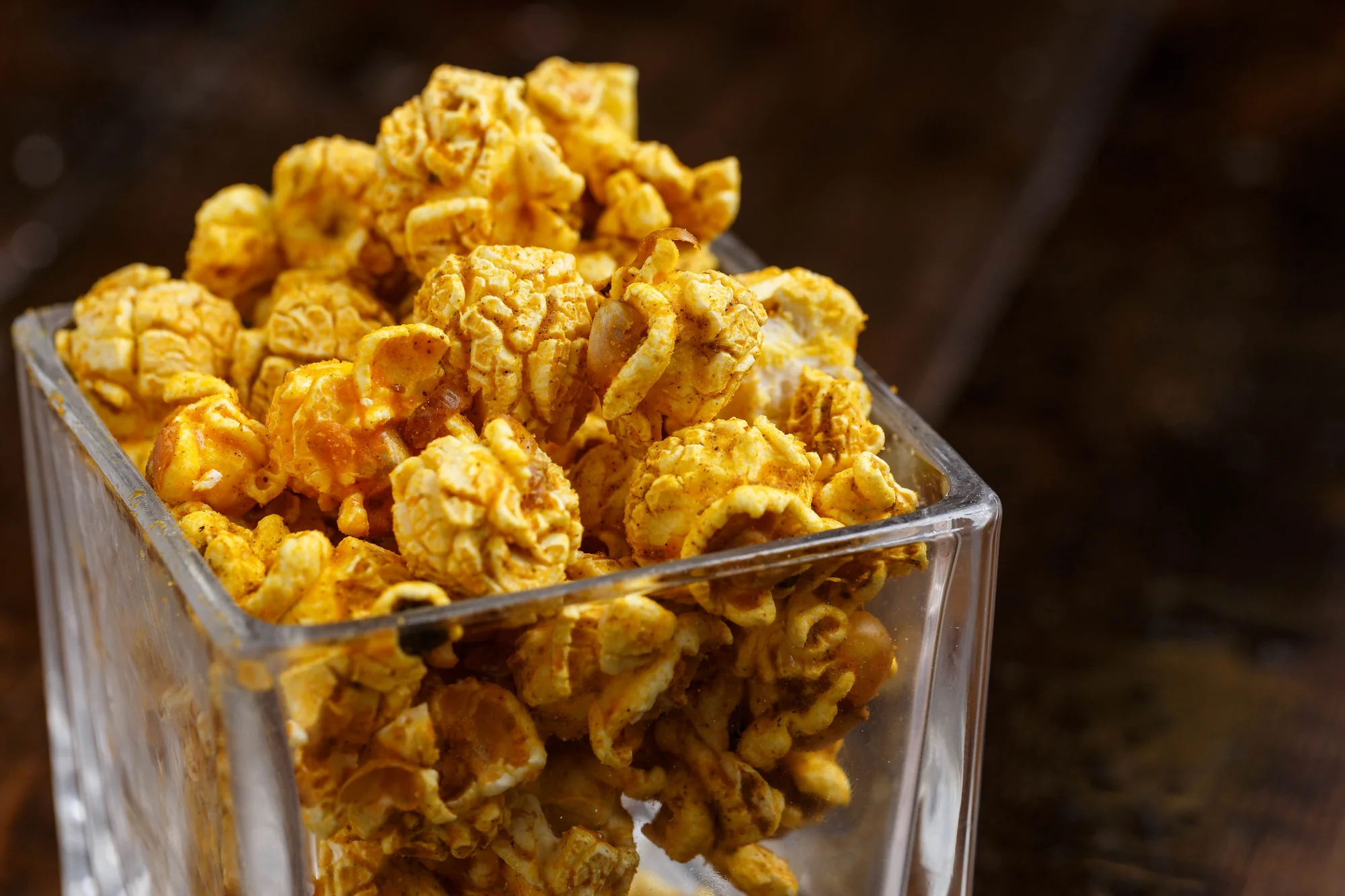
Who doesn’t love popcorn? It’s a beloved snack enjoyed by people of all ages, but have you ever tried gourmet popcorn? In this article, we’ll delve into the world of gourmet popcorn, exploring its origins, flavors, health benefits, and much more.
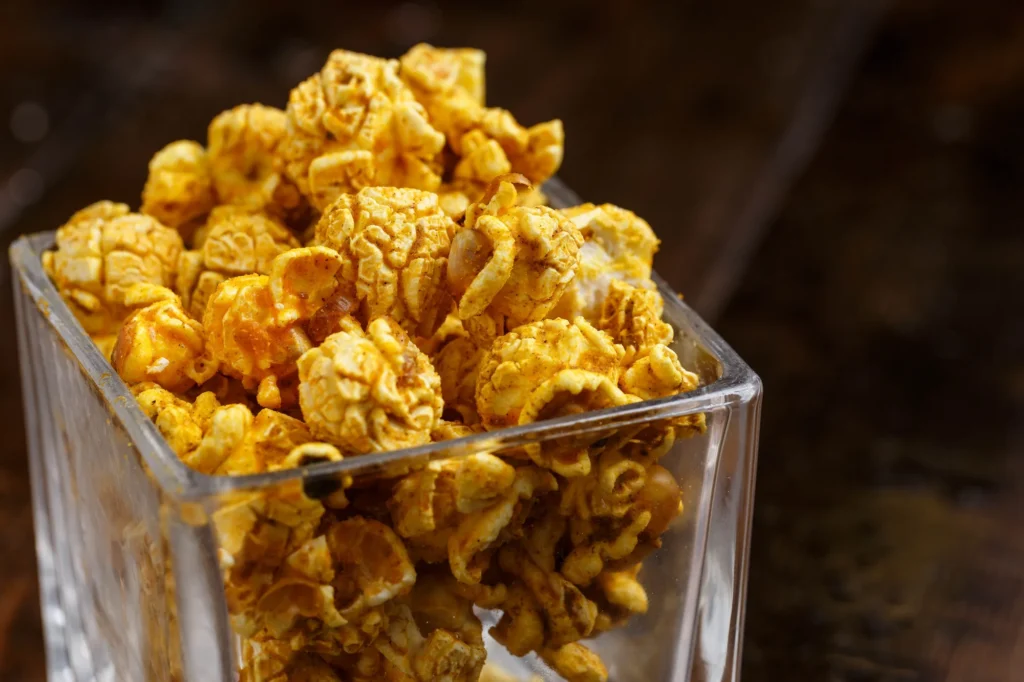
1. Introduction to Gourmet Popcorn
Popcorn has been a popular snack for centuries, but gourmet popcorn takes this simple treat to a whole new level. Gourmet popcorn is not your average movie theater popcorn; it’s crafted with high-quality ingredients and unique flavor combinations to tantalize your taste buds.
2. History of Popcorn
Popcorn has a rich history that dates back thousands of years. Native Americans were the first to cultivate and enjoy popcorn, and it eventually became a staple snack in American culture. Today, popcorn is enjoyed around the world in various forms, including gourmet popcorn.
3. What Makes Popcorn Gourmet?
Gourmet popcorn stands out from the crowd thanks to its premium ingredients and innovative flavors. From classic buttery popcorn to exotic combinations like truffle oil and parmesan, gourmet popcorn offers something for every palate.
4. Popular Gourmet Popcorn Flavors (2024)
Savory Flavors
Savory gourmet popcorn flavors include:
- Truffle Parmesan
- Sriracha Lime
- Garlic Herb
- Bacon Cheddar
Sweet Flavors
Sweet gourmet popcorn flavors include:
- Caramel Sea Salt
- Chocolate Drizzle
- Peanut Butter Cup
- Cookies and Cream
5. Health Benefits of Gourmet Popcorn
Contrary to popular belief, gourmet popcorn can be a healthy snack option when prepared with the right ingredients. It’s low in calories, high in fiber, and gluten-free. Plus, it’s a whole grain snack that provides essential nutrients like vitamins, minerals, and antioxidants.
6. How to Make Gourmet Popcorn at Home
Making gourmet popcorn at home is easier than you might think. All you need is high-quality popcorn kernels, flavorful oils or seasonings, and a bit of creativity. Experiment with different flavor combinations to find your perfect gourmet popcorn recipe.
7. Gourmet Popcorn as a Gift Idea
Looking for a unique and delicious gift idea? Consider giving gourmet popcorn! Whether it’s for a birthday, holiday, or special occasion, gourmet popcorn gift baskets are sure to delight recipients of all ages.
8. Where to Buy Gourmet Popcorn
Gourmet popcorn is available at specialty food stores, online retailers, and gourmet popcorn shops. Many businesses also offer customizable options, allowing you to create your own unique popcorn flavors.
9. Gourmet Popcorn and Movie Nights
Upgrade your movie nights with gourmet popcorn! Whether you’re watching a blockbuster film or binge-watching your favorite TV series, gourmet popcorn adds a touch of luxury to the viewing experience.
10. Gourmet Popcorn for Events and Parties
Gourmet popcorn is a crowd-pleaser at events and parties. Serve it in decorative containers or popcorn bars with a variety of toppings for guests to enjoy.
11. The Rise of Gourmet Popcorn Businesses
In recent years, gourmet popcorn businesses have been popping up all over the world. These artisanal popcorn makers pride themselves on using high-quality ingredients and unique flavor combinations to stand out in a crowded market.
12. Sustainability in Gourmet Popcorn Production
As consumer demand for sustainable products grows, many gourmet popcorn producers are taking steps to minimize their environmental impact. From sourcing organic ingredients to using eco-friendly packaging, sustainability is becoming increasingly important in the gourmet popcorn industry.
13. Popcorn Around the World
Popcorn is enjoyed in cultures around the world, often with unique seasonings and preparations. From spicy masala popcorn in India to sweet kettle corn in the United States, popcorn holds a special place in culinary traditions worldwide.
14. Conclusion: The Future of Gourmet Popcorn
As consumers continue to seek out unique and flavorful snacks, the future looks bright for gourmet popcorn. Whether enjoyed as a guilt-free indulgence or a special treat for a special occasion, gourmet popcorn is sure to remain a beloved snack for years to come.
Cooking Recipes
Avocado Roll: A Delicious and Healthy Sushi Delight
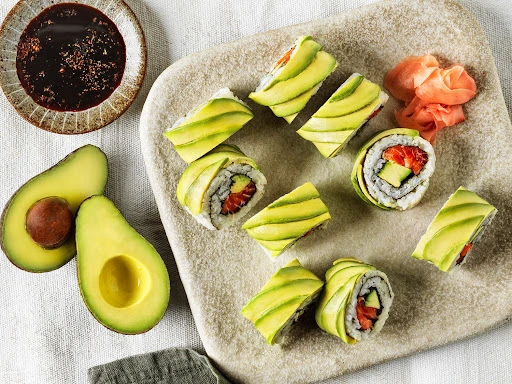
Avocado roll, a staple in sushi menus around the world, combines the creamy texture of ripe avocado with the umami flavor of sushi rice, wrapped in seaweed. It’s a delightful dish enjoyed by sushi enthusiasts and novices alike. In this article, we’ll explore everything you need to know about avocado roll, from its history and origins to how to make it at home, along with its health benefits and serving suggestions.

History and Origin
The avocado roll, also known as “avocado maki,” has its roots in traditional Japanese cuisine. While sushi itself dates back centuries, the avocado roll is a more recent addition, likely emerging in the mid-20th century. It gained popularity in the United States during the sushi boom of the 1970s and has since become a beloved sushi roll worldwide.
Ingredients Required
To make a basic avocado roll, you’ll need:
- Sushi rice
- Nori (seaweed sheets)
- Ripe avocados
- Rice vinegar
- Sugar
- Salt
- Sesame seeds (optional)
- Soy sauce, pickled ginger, and wasabi for serving
How to Make Avocado Roll (2024)
Preparing Sushi Rice
- Rinse sushi rice under cold water until the water runs clear.
- Cook the rice according to package instructions, then season with rice vinegar, sugar, and salt.
- Allow the rice to cool to room temperature before using it for sushi.
Preparing Avocado Filling
- Slice ripe avocados into thin strips.
- Drizzle with a bit of lemon juice to prevent browning.
Rolling the Sushi
- Place a sheet of nori on a bamboo sushi mat.
- Spread a thin layer of sushi rice evenly over the nori, leaving a small border at the top.
- Arrange avocado slices along the bottom edge of the nori.
- Roll the sushi tightly using the bamboo mat, sealing the edge with a bit of water.
- Slice the roll into bite-sized pieces using a sharp knife.
Variations of Avocado Roll
While the classic avocado roll is simple and delicious, there are endless variations to explore. Some popular additions include:
- Crab meat
- Cucumber
- Spicy mayo
- Tempura shrimp
Health Benefits of Avocado Roll
Avocado roll not only satisfies your taste buds but also offers numerous health benefits. Avocados are rich in healthy fats, fiber, vitamins, and minerals, making them a nutritious addition to your diet. Plus, sushi rice provides complex carbohydrates for energy, while nori offers essential minerals like iodine.
Serving Suggestions
Avocado roll is typically served with soy sauce, pickled ginger, and wasabi on the side. Pair it with a bowl of miso soup or a fresh salad for a complete meal. Garnish with sesame seeds or green onions for added flavor and visual appeal.
Tips for Making Perfect Avocado Rolls
- Use ripe avocados for the best flavor and texture.
- Wet your hands before handling sushi rice to prevent sticking.
- Press the sushi roll firmly to ensure it holds together when sliced.
- Experiment with different fillings and toppings to customize your avocado roll.
Popular Avocado Roll Recipes
- California Roll: Avocado, crab, and cucumber wrapped in nori and sushi rice.
- Spicy Tuna Avocado Roll: Tuna mixed with spicy mayo and avocado.
- Rainbow Roll: Avocado roll topped with assorted sashimi and avocado slices.
Avocado Roll in Different Cuisines
While avocado roll originated in Japan, it has been adapted and embraced by sushi chefs worldwide. You can find variations of avocado roll in sushi restaurants across the globe, each with its own unique twist.
Avocado Roll vs. Other Sushi Rolls
Compared to other sushi rolls like the spicy tuna roll or dragon roll, avocado roll is often lighter and more refreshing. It’s a popular choice for vegetarians and those looking for a healthier sushi option.
Conclusion
Avocado roll is a delicious and versatile sushi option that’s easy to make at home. Whether you’re a sushi aficionado or new to Japanese cuisine, avocado roll is sure to satisfy your cravings for fresh and flavorful sushi. Experiment with different fillings and toppings to create your own signature rolls and enjoy the health benefits of this nutritious dish.
-

 Top 103 weeks ago
Top 103 weeks agoTop 10 Army Sportswear in 2024: Gear Up for Performance and Style of an Elite
-

 Skin Care and Beauty Tips3 weeks ago
Skin Care and Beauty Tips3 weeks agoThe Power of Sunscreen in Your Skincare Routine (2024)
-

 Top 103 weeks ago
Top 103 weeks agoTop 10 Business Ideas for Couples: Building Success Together
-

 Pets3 weeks ago
Pets3 weeks agoDog Breeds in India 2024: A Vibrant Canine Mosaic
-

 Top 103 weeks ago
Top 103 weeks agoTop 10 Hollywood Movie Theaters: Where the Magic of Cinema Comes Alive
-

 Entertainment3 weeks ago
Entertainment3 weeks agoDirty Pick Up Lines: A Hilarious Guide to Flirting 2024
-

 Movie Reviews3 weeks ago
Movie Reviews3 weeks agoCivil War(2024) Movie Review
-

 Entertainment1 week ago
Entertainment1 week agoTop 10 Famous Portrait Paintings
